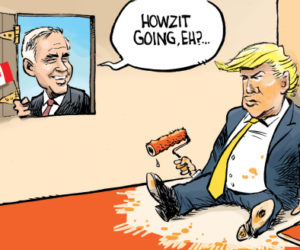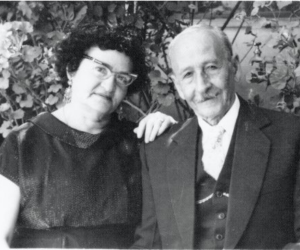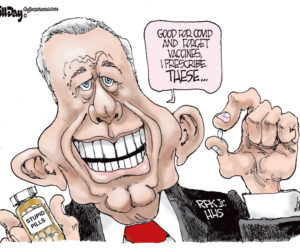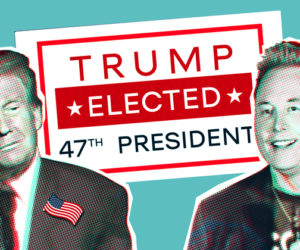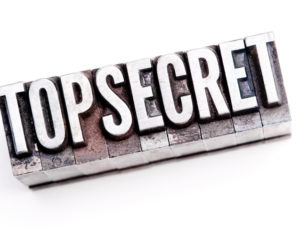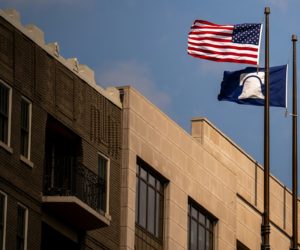The San Diego Chargers Stadium Debate: Thomas Powell, Derek Togerson, Dan McLellan, David Frerker and Booga Peters
Boltbliz.com EDITOR’S NOTE: The need for the Chargers to remain in San Diego is obvious to Charger fans. The fans here do not want to lose their team to a market like Los Angeles, Portland or San Antonio. But is that even relevant to the vote or the topic at hand among those in the county that aren’t Charger fans? I’ve set up Thomas Powell, Dan McLellan, Derek Togerson and David Frerker to discuss and debate the topic. I’ll provide the closing statement.
Thomas Powell’s take: Thomas is a Senior writer for BoltBlitz.com and a long-time resident of San Diego.
Dean Spanos realized in 2003 that Qualcomm was no longer suitable as an NFL stadium in today’s modern era. The oldest stadium in America could neither make money, nor be a pleasurable experience for the affordable pricing of an NFL game. The Padres, at the time, just built Petco Park and revitalized Downtown. It was delayed for years, costing John Moores millions of dollars to finally get approved. The Padres realized, quicker than Spanos, that the Q was a dump compared to today’s standards of a professional stadium. It’s not only the cramped seats. The fact that they have no luxury seats to make money, along with small hallways, cracks in the wall, but the inside of the stadium is atrocious. The poor wifi, small locker rooms, electrical problems, bad plumbing, and now you have an 1800 Coliseum.
The true fact is, the Murph is rundown and dying. But, it’s home to San Diego and your Chargers. It is the MURPH! It’s our childhood. The memories are installed in our souls as permanent as the beat in our hearts. We love the place. But there is no fixing the Murph.
Eleven years of discussion about a new stadium has led to an, “We’ve heard this before” attitude. Any discussion on the topic creates anger within the fanbase. They are tired of hearing about the team moving. But the urgency has never been more real and more glaring. The lease at the Q is running out. LA is moving quickly to have a new stadium and 2 teams moving there. The issue here is not LA, though. San Diego’s time is running out. The lease ends in 2020. If it’s not in LA, they will move elsewhere. That’s what people don’t understand. Dean Spanos doesn’t want to move, and he’ll say all the right things until the issue is on the forefront and then he’ll, without a doubt, relocate. By then, it’s too late. There is no turning back at that point. It’s a PR game right now. It’s all 100% politics when it comes to getting a stadium. This city loves the Chargers. No one wants to think about them leaving. But it has never been more urgent than now. Believe me when I tell you this, Spanos will NOT let a team move to LA while his future is in doubt in San Diego! The Chargers are NOT staying at the Q; period.
If the Chargers move, San Diego will move into the Flintstone age of a sports city; no NFL team, no NBA team and no NHL team. Sadly, where would the San Diego Aztecs play? That would remain a huge question mark. But, the politics, again, are what will decide this team’s fate. The team is aiming for a ballot election. You, legally, have no ballot election for tax paying money to be spent on a stadium. Believe me, it will be tax-paying money, and a lot of it, to get a new stadium for the Chargers. A few polls have been conducted in SD regarding this issue. The majority will overwhelmingly deny a stadium. Sad, but true.
It’s a tough city to build confidence in why tax-paying money should go to a stadium. There are no neighbors to the east. It’s a desert. West? It’s an ocean. South? It’s Mexico. North? Well, yes, there’s that.
The majority of season ticket holders are from North County, Orange County and Los Angeles. Will it be a county-wide vote, or a city-wide vote? Dan McClellan will chime in to tell you why that is important. He’ll also explain the politics of all this. But, trust me when I say to you honestly, this will not come down to sports. It’s going to come down to our team and the politics of San Diego. The vote will decide everything. If it passes, we get a new stadium. If it fails, the team announces the following March they’re leaving. There’s a deadline now, folks. This isn’t like before. The argument for a stadium in an effort to gain a Super Bowl is now useless. The NFL has not moved to a rotation now. They have actually moved away from that thinking. You’re not getting a Super Bowl every 4 years. But, we know they’ll get zero Super Bowls without a stadium. The talk is over, and the time for action is now. It’s now all about the politics.
Derek Togerson’s Take: Derek is a writer and reporter for NBC San Diego.
Oh, what tangled webs we weave when we practice to get a new stadium built in California which has turned out to be one of the most difficult states in the union for the NFL to maneuver inside of.
With apologies to all the knowledgeable individuals who are contributing to this topic, and any of you committed enough to read all the way through it, this will not be over quickly (and I promise that is the final line that might even be obtusely related to 300). This simply is not a simple issue.
Since Tampa Bay dismantled Oakland in Super Bowl XXXVII, and the NFL basically told the Chargers and the city of San Diego it was not coming back until it had a better facility, this has been a debate without end. I sometimes think Godot will show up before we have a resolution. My opinion on this matter has been formed through multiple experiences, many of them disparate and seemingly unrelated, but all leading the to same conclusion:
If San Diego wants to remain in the conversation with the major cities in America, it needs to have a first-class multi-purpose facility.
Notice I didn’t say NFL stadium there?
For that, there is a very good reason. Let’s go back to 2012. The Giants were about to beat the Patriots in the Super Bowl (again), this time at Lucas Oil Stadium in Indianapolis, IN. I was there for that game. On the Friday before the main event, I had grown sick of listening to Bill Belichick and Tom Coughlin talk for 30 minutes and say nothing, so I tracked down former Indiana Governor Mitch Daniels. He was instrumental in getting the new facility built, even though the RCA Dome was already there and many people in Indiana had zero desire to spend more money to build a new house for a billionaire to have his 53 millionaires to play in. I was curious about how it got done.
“We didn’t do what we did to build a stadium for the Colts,” Gov. Daniels told me. “We built a stadium and convention center as one facility, which is part of the magic that’s making this work so well. 90-percent-plus of the events that are in that stadium are not Colts games, so we’re getting multi-use. It’s conventions and Final Fours and major entertainment that we were getting, all of it to the benefit of the whole state.”
The other point Gov. Daniels made is very important, and it’s where the Chargers, the Spanos family, and Mark Fabiani have failed miserably. You cannot sell a new facility as “a new Chargers stadium.” You MUST label it as a new sports and entertainment facility that will benefit the entire region. Once the good folks of Indiana stopped looking at a new stadium as a new stadium, and started looking at is as a massive community events center (which it realistically is), the ballot measure passed with no trouble.
Gov. Daniels (whose term as governor ended in 2013 and is now the president of Purdue University) told me Indianapolis had conventions moving there from places like Florida. In March. The facilities are just that good. Now, you take that kind of situation and put it in San Diego’s weather? People will be knocking each other over to hold events here, and that is a good thing for the entire county of San Diego. With the success of San Diego State’s basketball program, the NCAA will happily hold a Final Four in our town. The NFL will be happier than a Kardashian in an NBA locker room if it gets to hold its major event in San Diego twice a decade. Plus all the motocross, monster trucks, Aztecs football, blah blah blah that will come with it will help the facility, even if it costs $1 billion to build, pay for itself within 15 years.
The latest ideas in San Diego have the ballot measure extending to the entire county, not just the city, which is a tremendous first step. Like I said, this is a regional undertaking that will reap regional benefits. I like the recent idea of the city working with the team to build a new facility in the East Village, while leveraging land in Mission Valley and around the Valley View Casino Center (Sports Arena). It’s ambitious and just might work without costing the taxpayers an exorbitant amount of money. Plus, we’ve seen what Petco Park has done for Downtown San Diego, and that’s with a MLB franchise that’s had a winning record four times in 11 years.
The NFL is king in America. Only the finest of cities (and Jacksonville) get a National Football League franchise. For all its issues and recent PR nightmares, the NFL has a tradition of doing tremendous work in communities that host teams. The Chargers and their players have donated countless hours and resources to local schools and homeless shelters. Parks have been built, high school facilities have been upgraded, and families of military members have been taken care of because the professional football team in town. Now, all of that is not as sexy as a Ray Rice or Adrian Peterson story, so the good stuff does not make the headlines, but I guarantee you it has more of an impact on the people of a community.
The league will tell us one Super Bowl can have an economic impact of up to $400 million for a community. Independent researchers have pinned that number at, on average, $100 million, still not exactly chump change. Now, figure that will happen in our town four or five times. Then tie it in to an expanded Comic-Con for the next 50 years. And a few Final Fours. And a few Mountain West Conference Football Championship games. And maybe even a couple of NCAA Football National Championship games. Can you hear the cash registers going off in your mind?
So, yes, I would love to see a new football-centric facility built in San Diego, and I think there’s a very good chance that can and will happen. I know this is a dream, but I would REALLY love to see Dean Spanos go Full Metal Ross Perot. You all remember the charismatic Texan who nearly stole the United States Presidency in 1992, don’t you? He made huge strides in that election season by purchasing blocks of time on network television where he explained his vision to the American people. If Mr. Spanos was so inclined, he could do the same thing with the San Diego affiliates (just DO NOT mess with Wheel of Fortune or Jeopardy!, it’s not worth the backlash of calls from people who can’t go more than 23 1/2 hours without seeing Pat or Alex). But a half-hour block of time and outline, in detail, why a new stadium is a great idea FOR US. Show everyone how it will benefit the community, why it’s a great idea, and once and for all change the perception that the Chargers need a new stadium or they’re leaving.
When people who work hard for their money think they’re being held over a barrel by a multi-millionaire, they tend to not respond very favorably. The Chargers do a wonderful job of giving back to the San Diego community. Now we need to understand why they need us to give back to them.
Dan McLellan’s Take: Dan is formerly of CBS Sports Rapid Report and a long-time resident of San Diego.
After 13 years, the biggest obstacle that separates the Chargers and the city of San Diego from coming to terms on a new multiuse stadium is the hotel owner’s insistence that an expansion of the convention center must be contiguous with the current facility.
Those are the main individuals that stand to profit most from the progress that invites more conventions and tourism. Baffling as it is, that is where we stand. In the end, egos may lead to every Charger fan, and resident of San Diego County, hurting when it is all said and done.
No convention center expansion. No stadium. No Comic Con. And maybe even no Chargers in San Diego.
Expanding the convention center has been almost as drawn out and fruitless of a process as the Chargers attempt to find a new place to play in San Diego. When Mayor Jerry Sanders was in office, a deal had been struck for a contiguous convention center expansion that would not have involved a stadium; a plan championed by hotel owners.
The transient tax, fee paid by hotel guests, would have been raised to finance a $520 million expansion that would have added over 400,000 square feet. Based on the proximity of hotel rooms to the convention center, the proposed tax increase was to add 1 to 3 percent to the cost per room.
One Big Problem: California state law requires a 2/3 majority vote to raise any taxes. The hotel owners and the city devised a scheme to circumvent the law. They re-defined the electorate with the hotel owners. Assumed legality was based on when the hoteliers (really their patrons) would be the ones paying the tax.
Several groups — including the Chargers — argued the tax was illegal. The Chargers proposed to modify the expansion by including a new stadium adjacent to Petco Park, and to put any tax increases to a public vote.
The Chargers plan would also infuse private funds. The NFL and the Chargers would bring around $400 million to the table; mostly in the form of an NFL loan.
Additional funds could be saved and generated by the city once the Chargers vacated Qualcomm. No longer would tax payers be on the hook for the $15 million annual cost that is necessary to maintain the outdated stadium, and the valuable land that Qualcomm sits on. The aforementioned land could then eventually be sold.
Combine these sources of revenue with a voter-approved hotel tax, and there would be enough funding for a multiuse facility that would be inviting to large-scale conventions, concerts, other major sporting events and, perhaps, new teams.
The Chargers proposed the multiuse concept to mayor Sanders. He did not endorse it because the city was too far along with their plan, and, at the time, there was hope that construction could begin before he left office.
It never happened.
In October of 2013, the Chargers presented their plan to the California Coastal Commission with hopes it would be adopted over the contiguous plan. It appeared to be a last-ditch effort for a multiuse stadium expansion. The acting mayor, Todd Gloria, opposed the Chargers plan and the commission voted to move forward with the expansion.
In August, a three-judge panel unanimously concluded the tax was illegal. They stated, “While we understand that the city would like to expand the convention center, we are duty bound to uphold the provisions of the California Constitution and the City Charter that requires that the city’s registered voters approve the special tax at issue in the case.”
The ruling was so strong that the city has chosen not to appeal to the California State Supreme Court. This left the expansion effectively dead in the water.
Throughout the stadium saga, the Chargers were the only legitimate team to realistically relocate to Los Angeles. Fear of the Bolts leaving has been their biggest bargaining chip. The landscape has changed. The NFL’s Oakland and St. Louis ownership have both made it known of their desire to relocate and now they both appear ready to move.
The topic was in the air this past Sunday when the Raiders visited San Diego. “Los Angeles is a great option,” Raiders owner Mark Davis said, according to the Los Angeles Daily News. “We loved it when we were down there.”
Dean Spanos was also asked about the potential of a new stadium in San Diego or moving. Spanos cited, “It’s 13 years, so it’s been a long time. It is frustrating, when you have seven different mayors over a 10-year period of time and the political structure has struggled here and the economy hasn’t been great. All those factors lead into it.”
The worst scenario for the Chargers would be another team takes over the Los Angeles market while no new stadium is built in San Diego by 2020. This is when their lease on Qualcomm runs out. With no bargaining power, the city could force the team into a much higher lease to cover the rising cost to maintain Qualcomm. Meanwhile, the Chargers could potentially lose 30 percent of their revenue that they say they bring in from Los Angeles.
The Chargers could avoid this nightmare by exercising an early exit to their lease on Qualcomm and beating the other teams to Los Angeles.
Relocation is a threat. It still remains unlikely, in my opinion. If the Chargers wanted to be in Los Angeles, they would already be there.
In August, JMI Realty, owned by former Padres owner John Moores, unveiled a $ 1.4 billion multiuse convention plan that would include a new stadium.
“The bottom line is you can physically create a multiuse facility with the Chargers that would be incredibly sexy and attractive and the whole issue of conventions and the appetite for being in a building like that would be very high,“ JMI President John Kratzer told the San Diego Union Tribune. “And I think the aggregate cost of doing that is going to be hundreds of millions of dollars less expensive,” he said.
JMI has clout, because of their past success in overseeing the ballpark district master plan for Petco Park. They also appear to have the backing of the Chargers.
Getting the support of the hoteliers and city council may be tougher. Even without funding, hoteliers continue to push for a contiguous expansion of the convention center that would not include a stadium. This puts the mayor and city council in a bind. Hoteliers are a powerful political pack in San Diego, and they tend to get their way.
However, no one wants Comic Con or the Chargers to leave on their watch. All parties are hopefully starting to realize time may be running out and options regarding both fronts.
At least the city and the Chargers are still talking to one another. That hasn’t always been the case. Negotiations are ongoing and parties have been reluctant to talk on record. They do not want those negotiations to be played out in the media. That’s a positive sign!
Hopefully progress that benefits all will finally be realized.
David Frerker’s Take: David owns and runs SanDiegoSportsDomination.com. He is about to be an SDSU graduate.
It would be huge if the Chargers left San Diego. SDSU has a deal with Qualcomm. I believe that contract lasts until 2019. If the Chargers leave, Qualcomm would then, most likely, be torn down. My belief is that the city of San Diego would circle around and support the Aztecs. SDSU has looked into building a stadium. They lose money while playing at Qualcomm; as the price of renting out Qualcomm is quite steep and that will only rise if the Chargers leave San Diego. SDSU would have to find another place to play. There is no room on the campus to build a stadium. SDSU does own land on the opposite side of the I-8 to build a stadium if that became necessary. On the other side, if the Chargers left San Diego, I truly believe San Diego fans would rally around the Aztecs as they have started to do for SDSU basketball.
My take: I am the Owner/Editor of BoltBlitz.com. Dave “Booga” Peters.
As I go through the aforementioned takes, I can easily agree with the majority of everyone’s thoughts.
This is where I go from here.
I moved here from Charlotte, NC to gain more access to the Chargers. I wanted to cover them in the most responsible way possible. When looking at the stadium issue, I keep hearing the same thing from the majority of parties involved, “We want a stadium.” I believe that Derek Togerson and Dan McLellan nailed it in that a multiuse facility must be the focus of further negotiations. Pleading for a stadium, with a focus on solely targeting Charger fans, is the wrong plan of attack. It has to benefit all of San Diego.
San Diego is a military town with many transplant fans from other regions, cities and fans of other teams. Attempting to ask the Charger fans to vote accordingly is the wrong route to go. As Togerson pointed out, via his conversations with Governor Daniels, Spanos and company must find a way to entice the entire county, not just Charger fans, to get on board with a plan to give this county what it wants; things that is doesn’t even recognize the fiscal relevance of without being shown the way. Everyone wants to be enlightened and given alternatives when it comes to voting and spending their hard-earned money.
Quite frankly, I am sick of talking about the stadium issue. Qualcomm is a stadium that is beyond repair, and that has been the case for more than a decade. That being said, that is our cement abomination of a stadium. We like to call it the home of the Chargers.
I am a San Diego Charger fan. And my vote in November of 2016 won’t really matter. It is up to the Spanos family. Are they willing to continue to fight and keep this team in San Diego?
We called in the cavalry, but this issue has become urgent enough that we found it necessary to cite the appropriate minds in to assess the situation.
Dave Booga Peters, Boltblitz.com editor
Thomas Powell
Derek Togerson
Dan McLellan
David Frerker
Cross-posted from the Chargers fan blog BoltBlitz.com


